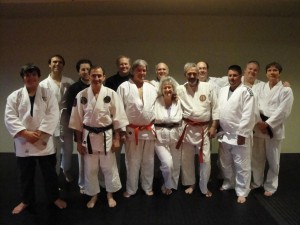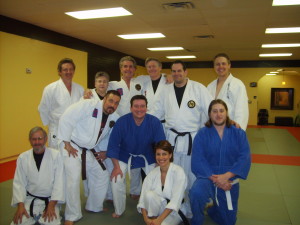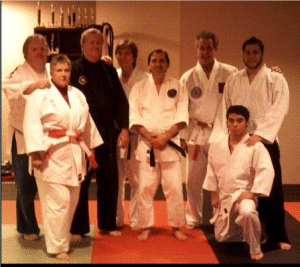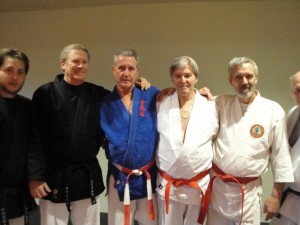Aikido for the Modern Society-II
As the individual starts the training process, they will have many questions and ideas about what they are experiencing. Since what we practice is a primarily a kinesthetic art a lot of the practitioners might experience difficulty in moving especially in some of the throws and rolls they are asked to perform.
This is where from the beginning of each class they will be asked to practice the art of Ukemi or falling ways. This will involve them totally as they can’t be thinking about something outside of class while they are rolling across the mat or being thrown onto the mat.
Ukemi is the foundation of any of the martial arts that involve throwing and falling. Ukemi practice helps preserve us for many years not only in class but outside of class. Many practitioners over the years, myself included, have taken falls on concrete, downstairs and a variety of other options that the world seems to provide for us to learn our lessons about being aware of our environment and possibly avoiding these sometimes traumatic episodes. Sometimes the nature of our world at present can be many times more hazardous than being in a fight.
Our next step in the training process is the learning of kata(training forms). We have many different katas which were taught to us by our predecessors from Japan. These katas are helping us to understand what possibly might occur in our contact with violence in the real world.
In a lot of ways they are pure concept about what could be involved in a fight, since we don’t know when or if these scenarios might present themselves. The new practitioner will see and practice a variety of kata in each class that is designed to help them in their progress of understanding and so start the integration process that will be part of the foundation for their Aikido learning process.
The next step in the integration process is very important as are the ones previously mentioned. The introduction of Principle into the training process can be very interesting and profound for the practitioner. For example, in Aikido training we ask the practitioner to move off the line of the attack continuously for all practice of kata. This one Principle can save one from many devastating events whether they be fight oriented or again out in the nature of the world, ex. move offline from in front of a moving car. Simple example, could save your life or keep you from getting seriously injured.
Other examples of Principle include eye contact, unbendable arm, same speed, just to name a few. As the weeks of involvement accumulate we are asking the practitioner to start combining the ukemi, kata, and principles to start feeling what is happening as they are being asked to deal with someone attacking them. This can bring about many revealing insights into what the person thinks they have learned as adverse to what they really have learned. We will be adding more articles to the site about the benefits of learning Aikido and how it may be applied to your daily life.
Thank you, Will Gable



